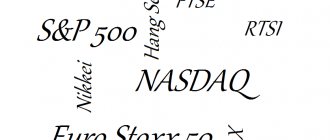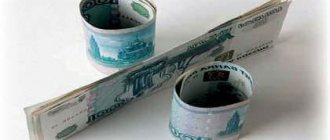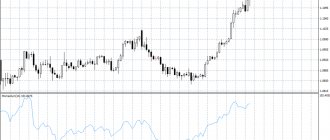Hello! In this article we will talk about investments in agriculture.
Today you will learn:
- What are the features of investing in the agro-industrial complex of Russia;
- How to properly invest your money in agriculture;
- Where to find private entrepreneurs for capital investments in agriculture;
- How to evaluate the effectiveness of investments.
What is investment in agriculture
Investments in the agricultural industry have three main areas of investment:
- agricultural production;
- updating the material base;
- social sphere (infrastructure, construction of housing, cultural facilities, education and healthcare).
This can be lending to both large agro-industrial complexes and peasant farms. Private investment in agricultural projects, government grants for production development and other investment instruments are possible.
Advantages and disadvantages of investments
Agriculture is one of the most promising areas in the economy.
The Russian government is interested in the development of agriculture and has approved a number of benefits to support it:
- reduced tax rates. Agricultural enterprises pay 12% tax to the budget;
- exemption from VAT, property tax and transport tax;
- special lending conditions. Part of the loan is compensated by the state in the form of benefits;
- state support for the Russian manufacturer. The customs rate for export is 15%, and for import – 60%. Which significantly stimulates agriculture in general;
- increase in the price of land suitable for agricultural activities. Farmland can be rented out, resold, or used as collateral when obtaining a loan.
But despite the support, investment in agriculture is insufficient. Russian farmers need more financial resources, and this shortage significantly affects the efficiency of investments.
Risks
Heterogeneity of climatic conditions creates serious problems for the successful promotion of investment projects in agriculture.
But there are types of risks that are typical for all regions:
- long production cycle. It is impossible to get quick income;
- most of the country’s territory is a zone of risky agriculture (low temperatures in winter, insufficiently fertile soils, etc.);
- dependence on the change of seasons, seasonality;
- shortage of qualified personnel in agriculture;
- a large percentage of outdated technology.
Investment assessment methodology
Now is the time to talk about what kind of return you can get from your investment. We will not provide statistical data, but will simply give you a formula with which you can calculate the return on investment specifically for your project.
Here she is:
Return on investment = (Total profit/Amount of investment)*100%.
Pay special attention to this indicator if you resorted to using borrowed funds. If the interest on the loan exceeds the repayment, then the project is considered unprofitable.
This is the simplest way to assess the effectiveness of investments, but it is sufficient to make a decision on further financing of the project.
How to invest in agriculture: step-by-step instructions
It is impossible to create specific step-by-step instructions for investing. Each case is individual. But it is quite possible to set a general direction, a “road map”.
- Potential assessment. Agriculture is a resource-intensive business, so large investments will bring decent profits. If your own funds are not enough, you should think about borrowed funds. In this case, it is necessary to take into account the creation of a financial reserve.
- Determining the goal. What do you want to get out of your investment?
- Selecting an investment object. We carefully study the financial and technical characteristics of production. And it would be best to see everything personally, with your own eyes. Having 100 pieces of equipment does not mean they are suitable for work. The wear and tear of the technical park in some agricultural enterprises reaches 90%.
- Risk identification.
- Preliminary calculations. You know the total volume of investment, you have decided on the investment object and conducted its audit; now, taking into account the information received and the planned risks, preliminary calculations are necessary. And based on this, the final decision is made.
- Conclusion of an agreement.
Greenhouse business
Currently, many investors are seriously interested in the idea of investing money in greenhouses. Such a small enterprise can consistently bring a stable profit to its owner. One of the main advantages of this business idea is the relatively small investment required to implement such a project.
Where to start
First of all, the investor should resolve the land issue. Indeed, a greenhouse requires a plot of agricultural land. This issue can be resolved in two main ways. The necessary land can be rented or purchased. For those investors who are just trying themselves in the greenhouse business, we recommend choosing to rent a plot of land.
Then you need to decide on the operating schedule of your greenhouse. Such a business can be either year-round or be subject to the principle of seasonality. It should be taken into account that greenhouses that operate all year round are much more expensive for their owners than those that operate, say, from March to November. This is due to the fact that in winter, utility bills in the greenhouse business increase significantly.
A novice investor should not immediately invest money in several greenhouses. To gain the necessary experience, one will be enough for you.
What to grow
On this issue, experts quite unanimously agree that the most profitable option for growing in a greenhouse is greens. Pay attention to the following crops: dill, parsley, green onions, basil and radishes.
This state of affairs can be explained by the minimal costs of sowing and caring for these crops, if we compare them with flowers, vegetables or fruits. In addition, greens are unpretentious, therefore, the risks associated with crop loss are much lower. Thus, this is the best option for a novice investor.
If for some reason you are not satisfied with greenery, then we advise you to take up flowers. This option promises no less profitability, but at the same time it is characterized by much more pronounced seasonality.
Basic expenses
Before investing money, you should understand what the minimum investment is required in order to set up a greenhouse business. The economics in this case are quite simple.
Today, an agricultural land plot measuring one hectare will cost an investor from 20 to 110 thousand rubles. It all depends on its location, the availability of transport and utility infrastructure and some other local factors.
The construction of an industrial greenhouse made of polycarbonate with dimensions 6x4x3.3 will cost the investor approximately 100 thousand rubles. It doesn’t make sense to set up a smaller greenhouse, since to produce any significant volume of products you need a decent amount of space.
Add to the amount received the utility tariffs of the constituent entity of the Russian Federation in which you plan to open a business. Also, do not forget about the cost of seeds of the selected crop and labor costs.
Investments in various areas of agriculture are currently more than relevant and attractive. Don't miss precious time and invest money in your agricultural business today.
Where to invest: review of the best investment options
My opinion is that it is best to invest in enterprises in your region. This brings with it a number of advantages:
- you know the specifics of your region and can correctly calculate and plan risks;
- availability. The possibility of personal control over the expenditure of funds and visual confirmation of their intended use.
You can contact the regional Ministry of Agriculture and, with the support of specialists, choose the most promising direction and enterprise for the project.
Or, alternatively, become a farmer yourself.
What problems may arise when investing?
In addition to the risks already mentioned, there are problems that a potential investor investing in agriculture may encounter:
- lack of insurance. The insurance market is reluctant to deal with uncertain risks;
- sales of products. You should look for partners and conclude supply contracts long before the harvest;
- equipped with modern technology. The cost of modern agricultural machinery is quite high; delivery from the manufacturer to the customer often occurs by rail, which is also expensive.
What are the advantages?
Before moving on to specific statistics, we should dwell on the advantages that investments in fixed capital have in agriculture. We can start with the fact that today, in the age of global pollution of the planet, many people are willing to overpay for products grown in conditions as close as possible to natural ones: with a minimum of chemicals, sometimes even damaged by pests (which emphasizes the fact that the product is not stuffed with pesticides and other supplements that are not always beneficial for humans).
Eco-products are already considered a kind of brand, so those who invest money in their production will definitely not lose. In addition, given the food embargo currently in force in the Russian Federation, the government strongly supports those who have taken up the task of replacing foreign fruits, vegetables and grain crops on the domestic market, so that, in addition to profit from sales, the potential investor will also receive assistance from the state.
How to get grants from the state and from private investors
A grant is money that the budget allocates to cover business expenses as part of agricultural development programs.
The state sets a number of requirements for candidates, compliance with which will be the main factor in receiving a grant.
- Professionalism. Having a higher education or running an agribusiness for more than 10 years.
- Availability of 10% of the funds from the cost of the project in personal ownership (this percentage is minimal, each region sets its own, but not less).
- A well-developed business plan.
- Land is personal property and real estate is not.
- Product sales strategy. Ideally, confirmed offer agreements with buyers.
- Number of jobs created.
In addition to the state, private investment funds are involved in the allocation of grants. But their requirements are identical, and sometimes even stricter, than those of the state ones.
Skolkovo will help innovators
Innovators in the field of agriculture and food production in Russia can count on the help of non-profit foundations, in particular the Skolkovo Foundation. “In the agricultural sector, Skolkovo has eight priorities: genetics, selection, feed, fertilizers, veterinary drugs, agrochemistry, digital solutions, food technologies, industrial biotech, engineering solutions for industry, cosmetology and dietary supplements, as well as pets,” - Natalya Krasheninnik, director for development of agrobiotech in the Skolkovo direction, said.
Skolkovo has a compensation program for 70% of costs already incurred, the so-called microgrants for innovators. Skolkovo participating companies can count on compensation of about 4 million rubles per year for expenses incurred in a number of areas, including participation in exhibitions, creating prototypes, conducting tests, and participating in international business missions. All applications are submitted through the website.
Now Skolkovo is looking for new companies, including agro-industrial ones, that are ready to implement digital solutions developed by startups. For this purpose, Skolkovo will compensate 50% of implementation costs.
Alternatives
In addition to direct investment, obtaining grants and loans, there are other investment instruments for financing agriculture.
Here are two examples of alternative options:
- Since 2021, the state agricultural development program “Far Eastern Hectare” has been in effect. Anyone can take farmland in the territory of Buryatia, Transbaikalia and the Far East;
- acquisition of shares in large agro-industrial complexes. For example: Miratorg is the largest producer of meat and semi-finished meat products. Since 2013, the capitalization of the holding has increased by 86 billion rubles.
How does the state help?
For complete import substitution of meat and dairy products imported from abroad, it takes up to 7 years, vegetables and fruits up to 5 years. In order to successfully achieve its goals, the Russian Government has developed a number of special measures to support investors and farmers. These include:
- issuing grants to peasant farms. The allocation of these funds provides for the development of infrastructure, the acquisition of land, and the construction of the necessary buildings and structures. This money is targeted. In other words, farmers must account for them and show that they invested them for their intended purpose. It should be taken into account that the budget sets a strict limit for such grants;
- issuing subsidies and loans that farmers can invest exclusively for the development and modernization of their own farms;
- issuance of subsidies that can be invested in repayment of leasing for previously purchased agricultural equipment;
- carrying out compensation for expenses that were invested in the objects of peasant farms.
The opportunities listed above provide excellent opportunities for investing your capital. The country is creating all the conditions for such investments to be successful.
Reviews
Real people have left reviews on different types of investments on the Internet.
Having monitored reviews of different types of investments in agriculture, we can conclude: everything is very difficult. Our country is just at the beginning of its journey. And negative results are inevitable.
The main result at the present stage is that the state is interested in the development of agriculture and is ready to meet both investors and agricultural producers.
I hope that my article answered your questions. Write comments and share the link on social networks.
Implementation of a set of measures for growing sturgeon species in cages, which are special structures installed in the waters of the Volga River or its tributaries (in particular, the Khurdun River), based on the existing practice of sturgeon farming and local climatic and other characteristics.
- Obtaining permits for the installation of 150-200 cages.
- Registration of a land plot adjacent to the coastline 3 km from the regional center of the village of Ikryanogo.
- Construction of temporary structures for the operation of cage lines.
Project goals:
- Construction of a cage line for growing sturgeon species in cages with a capacity of 10 tons of fish and 500 kg of black caviar per year.
- Additional products: fish delicacies.
- Sales of manufactured products.
- Receiving a profit.
Competitive advantages of the project:
- Sturgeon fish (sterlet, Russian and Siberian sturgeon) have high adaptive plasticity and, when grown in cages, use feed well and provide a high economic effect when growing.
- Cages for fish breeding provide optimal conditions for the development of juveniles and the full growth of healthy individuals until they reach marketable weight. They have a fairly simple design and are bags made of nylon latex mesh, specially designed for growing fish. To give the structure an optimal shape, a frame is used, to which the bags are attached, hanging freely into the water. This type of equipment for growing fish is called a fish tank.
- The size and shape of cages can vary. They must be selected based on the climatic conditions of a particular region, as well as the characteristics of the reservoir and, of course, the types of fish being grown. At the moment, fish farmers around the world in most cases prefer round, rectangular and octagonal fish cages.
- Due to their unpretentiousness, floating cages are the most common. Due to their widespread popularity, their appearance and shape are constantly being improved, and the market is characterized by increasing diversity. However, the highest priority is to separate them by type of construction.
- To achieve savings in feed consumption of up to 30%, automatic feeders are used at the rate of 2-3 pcs per cage (depending on the density of fish stocking) costing approximately 200 euros/pcs.
Brief information about the state of the industry in the country where the project is implemented: Analysis of the Russian market for black caviar and sturgeon fish meat Beluga, sturgeon, sterlet, stellate sturgeon and black caviar are considered traditional for the Russian table. Let this image be formed largely artificially, “from above,” only in the last two hundred years; let most of the sturgeon species in the Moscow River happily die out during the Little Ice Age of the 14th-18th centuries and “traditionally Russian” sturgeons were brought to Moscow and St. Petersburg from the Volga and the distant Caspian Sea. The fact remains: in the 20th century, black caviar and tender sturgeon meat became on the international market the same Moscow-Russian-Soviet brand as vodka, the Bolshoi Theater and Yuri Gagarin. Until the mid-eighties, the production of food black caviar in the USSR on an industrial scale occupied first place in the world in terms of volume. In the Caspian Sea, up to 28 thousand tons of sturgeon were caught and up to 2,500 tons of black caviar were produced. This accounted for 90% of the entire world caviar market. The USSR practically had a monopoly on the export of sturgeon caviar. By the time the USSR collapsed, the situation had changed. First, starting in the 1950s, the sturgeon population began to decline. The development of industry and, in particular, the construction of waterworks during Stalin's rule led to the pollution of rivers, and sturgeon were cut off from traditional spawning grounds. The Caspian ecosystem has degraded especially rapidly. This disrupted the conditions in which sturgeon could naturally reproduce. The brands of “Stalinist industrialization” and “Russian cuisine” turned out to be mutually exclusive. The second reason for the disappearance of sturgeon fish was the predatory fishing of sturgeon - poaching. It existed at all levels: starting with the individual poacher, armed with a net and electric fishing rod, and ending with fishing and production bypassing planned quotas. In the latter case, chains were formed from fishing cooperatives, directors of processing industries, functionaries of the USSR Ministry of Foreign Trade and foreign offshore companies. The “left” caviar was produced by the same production as the “official” caviar.
Brief information about the state of the industry at the regional level: So, in the second half of the 20th century in the Caspian Sea, the volume of natural reproduction of sturgeon fish decreased tens of times due to overfishing, poaching, environmental pollution, and especially - regulation of the Volga flow by a cascade of hydroelectric power stations (more than 10) . The beluga suffered the most among the Caspian sturgeons, as the species with the longest spawning migration. Over the 15 years from the early eighties to the mid-nineties, the number of sturgeon fish in the Caspian Sea decreased by 15 times. If in 1981 16,850 tons were caught there, then by 1996 this figure had dropped to 1,094 tons. The main corporate buyers of legal black caviar are international airlines, cruise ships and restaurants. It is not surprising that most foreign importers preferred Iran as a supplier of black caviar. After all, getting involved with Russian poachers means spoiling your image and risking getting a low-quality product. So Iran came out on top in the production of sturgeon caviar in the entire Caspian region. A potential solution to the problem is aquaculture of fish. In Russia, in recent years, no one knew whether black caviar was sold anywhere except in elite Moscow restaurants, and how much it cost. Today there is black caviar on store shelves again. Its price is from 2500 rubles per 50 grams. This is legal caviar produced by Russian farms. The largest of them are located in the Vologda region, Astrakhan and Bashkiria. At the end of 2008, a fish factory with sturgeon pools was opened in the village of Gamzyuki, Kaluga region. They use German technology for extracting caviar without the need to kill the fish. The plant's management expects to produce up to 16 tons of black caviar by 2014 for export. The result is an ironic picture. On the one hand, there is legal black caviar in stores again, and this is a big plus from the consumer’s point of view. On the other hand, Russia has long lost its status as a “caviar” state, and even more so has ceased to be the main supplier of the delicacy to other countries. Black caviar is imported into Russia itself from other countries. And entrepreneurs from France, the USA, Israel, Italy and Germany use the Russian sturgeon species to breed this fish on their farms. According to Rosselkhoznadzor, 96% of black caviar on the Russian market is counterfeit. According to experts, the volume of official production of black caviar in Russia in 2004 was almost equal to exports. This means that caviar on the domestic market is mainly poached. It is either produced in the same factories as the official one, but, for example, at night, or anywhere, in complete unsanitary conditions. In the latter case, the caviar turns out to be of poor quality and even dangerous for consumption. Thus, the investment attractiveness of this project lies in the fact that under the conditions of a moratorium on the fishing of sturgeon species, it becomes possible to grow them in “home” conditions and sell fish products and black caviar legally.











